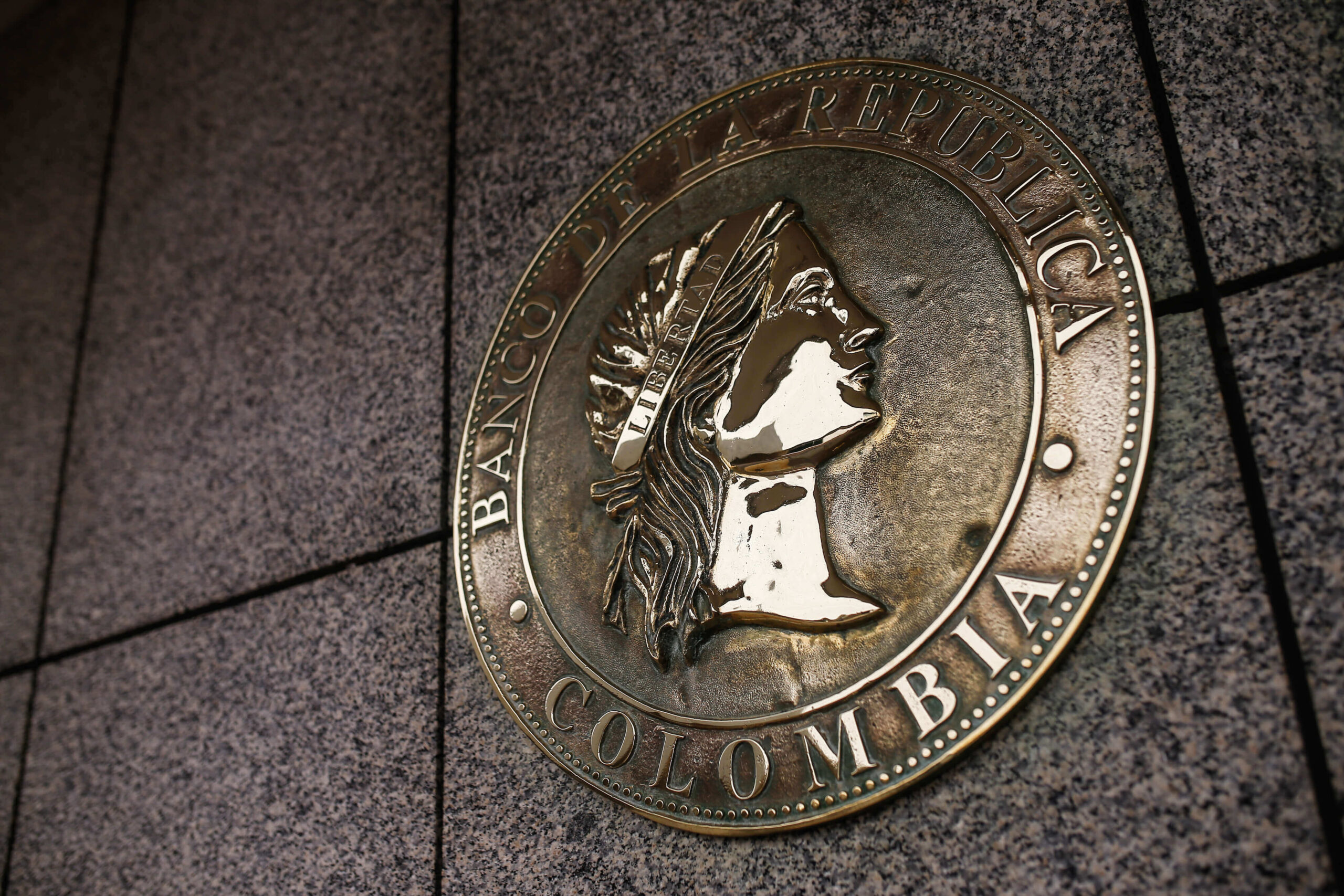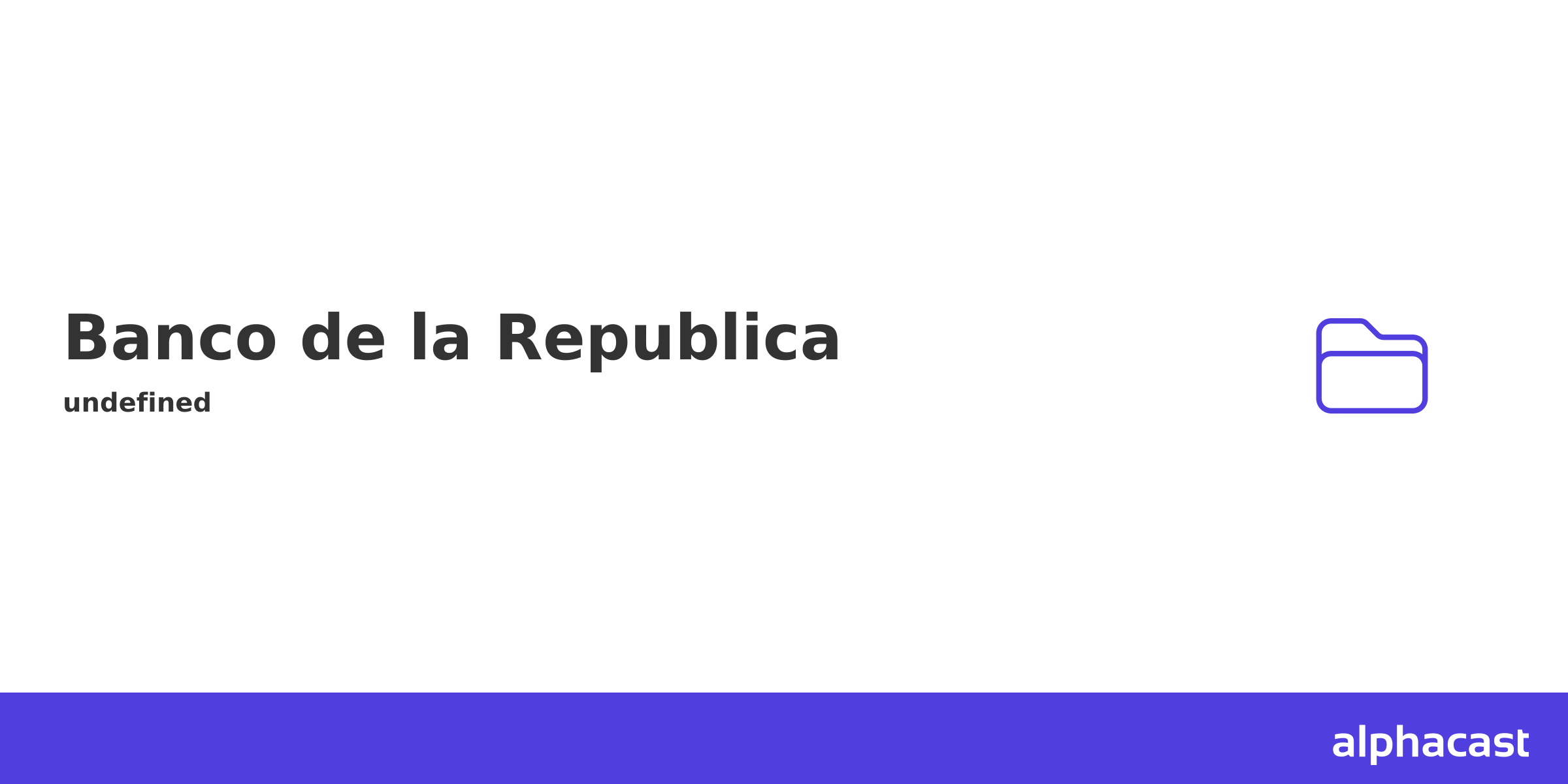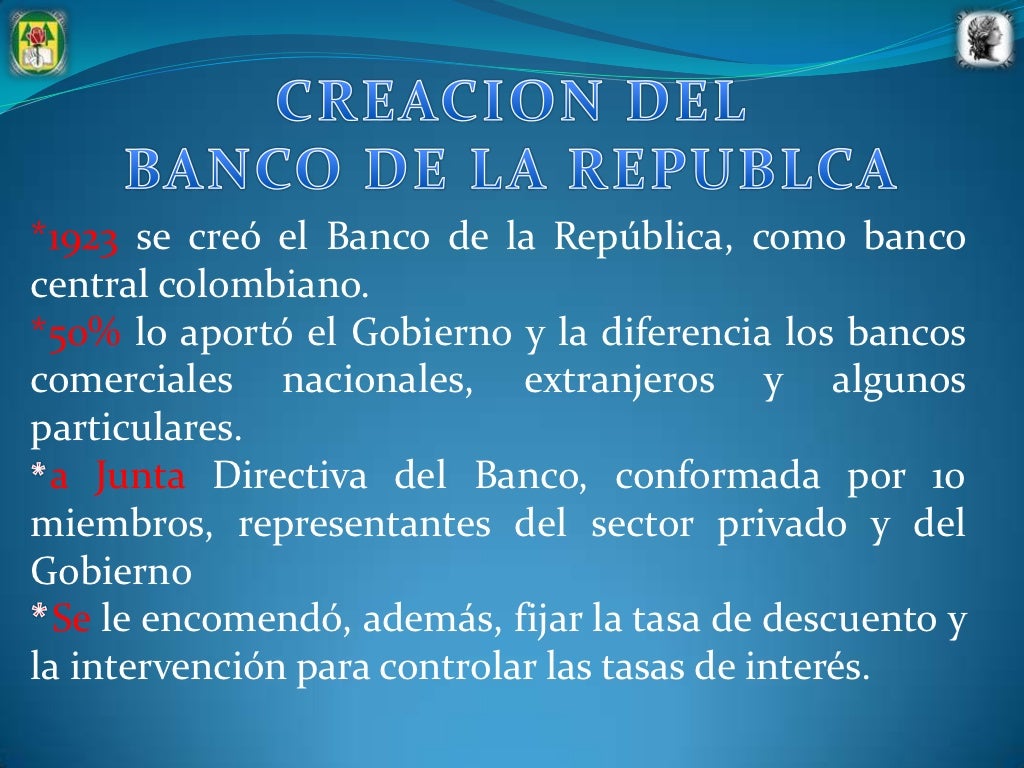Banco De La República - Shaping Colombia's Money
For many people, the workings of a country's central financial institution might seem a bit distant, almost like a quiet force in the background. Yet, the decisions made by places like the Banco de la República truly touch everyone's daily life, from the price of things we buy to the money in our pockets. It's a place that shapes a good deal of what happens with our economy, you know, in a very real way.
Recently, for example, the main decision-making group at the Banco de la República made a big choice. They decided, with everyone agreeing, to bring down the key interest rate. This particular rate went down by a small amount, just 25 basic points, making it 9.25%. This change, which was made public on May 6, 2025, after being decided the day before, is quite a significant move that can ripple through the financial landscape, affecting loans and savings for regular folks, too it's almost a direct influence.
This institution, established back in 1923, is Colombia's central financial authority. It’s the one that puts out the Colombian peso, manages how money flows, and sets the exchange rate for foreign money. Beyond its financial duties, it also runs cultural spots, like museums and libraries, which is pretty interesting, actually. So, it's more than just numbers and policies; it's a part of the country's fabric, in some respects.
Table of Contents
- A Look at the Banco de la República
- How Does the Banco de la República Influence Your Money?
- What is the TRM and How Does the Banco de la República Figure It Out?
- Services from the Banco de la República
- The Country's Finances and the Banco de la República
- Why Are Economic Figures from the Banco de la República Worth Checking?
- Looking Back at the Banco de la República - A Century of History
- Beyond the Numbers - The Cultural Side of the Banco de la República
A Look at the Banco de la República
The Banco de la República stands as the central financial organization for Colombia. It came into being way back in 1923, and since that time, it has truly played a big part in building the country's story. This institution has been a core element in the nation's progress, a very steady presence indeed. It's pretty much the backbone for how money works in Colombia, you know, setting the rules and making sure things run smoothly.
Its duties include putting out the Colombian peso, which is the money everyone uses. It also takes care of the country's financial guidelines and manages the exchange rate, which is how much local money you get for foreign money, like US dollars. Beyond these financial tasks, the Banco de la República also runs cultural spots, such as museums and libraries, which is a rather unique aspect of its operations, actually. It shows a broader commitment than just numbers, in some respects.
How Does the Banco de la República Influence Your Money?
One of the ways the Banco de la República makes a difference in your everyday finances is through its interest rate decisions. The board of directors recently made a collective choice to bring down the main interest rate that guides financial policy. This was a unanimous vote, which means everyone on the board was in agreement, a pretty clear sign of their shared outlook, you know.
- Mike Goodnough
- House Of Night Series Order
- Christopher Walken Movies
- Sanford Bookstaver
- Revenge Of The Nerds Cast
They decided to cut this rate by 25 basic points. To put that in simpler terms, it's a small but meaningful adjustment to the cost of borrowing money. The new rate is now 9.25%. This decision was made on May 5, 2025, and then made public the very next day, on May 6, 2025. Such changes can often affect the rates banks offer for loans, like for homes or businesses, and even what you earn on savings, so it's a topic that really matters to many people, in a way.
When the Banco de la República changes this rate, it's often trying to guide the country's spending and saving habits. A lower rate can sometimes make it cheaper to borrow money, which might encourage people and businesses to spend and invest more. This, in turn, could help the economy grow. It's a delicate balance they are always trying to strike, you know, to keep things stable and moving forward.
What is the TRM and How Does the Banco de la República Figure It Out?
The TRM, or "tasa de cambio representativa del mercado," is basically how many Colombian pesos you get for one US dollar. It's a figure that people who deal with international trade, or even those just planning a trip abroad, pay close attention to. This rate is calculated by the Banco de la República every day, and it reflects the buying and selling of foreign money, you know, between financial groups.
The way the TRM is worked out is pretty straightforward, actually. It comes from looking at all the buying and selling of foreign money that happens between different financial go-betweens in the Colombian money market. These are deals where the money changes hands on the very same day the trade is agreed upon. So, it's a reflection of real-time market activity, which is quite important for its accuracy, in some respects.
This daily calculation by the Banco de la República helps provide a consistent and official exchange rate for everyone to use. It removes guesswork and offers a clear figure for businesses and individuals who need to convert money. It’s a very practical service, really, that helps keep financial dealings transparent and fair for everyone involved, more or less.
Services from the Banco de la República
The Banco de la República offers various services to the public, aiming to make interactions easier and more direct. For instance, you can take care of things related to the actions of the bank's own staff right on their website. This means if you have a question about something an employee did, there's a clear way to address it, which is pretty handy, you know.
Beyond that, the bank provides information about services and training sessions that are available to the public in a digital format. This could include workshops or educational materials that help people better understand financial topics or how the economy works. It's a way for them to share knowledge and help people get a better grip on financial matters, which is quite useful, you know.
Getting Help from the Banco de la República
If you need to reach out to the Banco de la República for information, or if you have a complaint, a request, or even a suggestion, they have official ways to do that. These channels are set up for individuals, public organizations, and even legal bodies. So, if you have something to say or ask, you can be sure there's a proper way to get in touch, which is pretty reassuring, really.
It's worth noting that a survey on their website is just for finding out how helpful the site's content is. It's not for sending in your questions or concerns. For those kinds of things, you'll need to use their other official contact methods. This distinction is quite important, actually, to make sure your message gets to the right place and is handled properly, in some respects.
The Country's Finances and the Banco de la República
When we look at the country's financial figures, the Banco de la República has some interesting historical information. For example, records show that the country's debt has been on an upward trend since 2011. As of March 2025, this debt was equal to 48.1% of the country's total economic output, known as GDP. This figure comes from the finance department on June 11, 2025, and it gives us a picture of the country's financial situation, you know.
Even though the rate at which prices are going up, what we call inflation, has been showing signs of slowing down, it is still expected to stay outside the target range of 3%. This means that while things might be getting better, prices are still rising a bit faster than what the Banco de la República would ideally like to see. It’s a challenge they are always watching closely, you know, to keep the economy stable for everyone.
The Banco de la República also keeps track of Colombia's main economic numbers, updating them every month. This includes details about inflation, the country's total economic output (GDP), various interest rates, and how many people are out of work. These figures offer a regular snapshot of the country's economic health, giving a good sense of how things are moving along, more or less.
Why Are Economic Figures from the Banco de la República Worth Checking?
Knowing where to find reliable economic information is quite helpful, and the Banco de la República is a solid source. Their website lets you check on the main economic figures for Colombia, and these are updated every month. So, if you are curious about how the country's money matters are doing, this is a place to look, which is pretty convenient, you know.
You can find details about how much prices are changing, the overall size of the economy, different rates, and how many people are without jobs. This kind of information can help people make sense of the wider economic picture. It's a way to stay informed about what's happening with the country's finances, in a very direct manner, you know, without too much fuss.
The Banco de la República also has an economic research section on its website. Here, you can find out about the people who do research for the bank, see their written works, and learn about the research groups that exist within the country, connected to the bank. They also share information about academic meetings and events they hold, which is pretty neat for anyone interested in deeper economic topics, actually.
This research portal also gives you information and access to services and materials from their support center. It’s a place where serious economic study happens, and they make some of that available to the public. It really shows their dedication to not just managing the economy but also understanding it better through careful study, in some respects.
Looking Back at the Banco de la República - A Century of History
The Banco de la República has quite a history, having been created on July 23, 1923. That means it has been around for a very long time, truly participating in building the nation's story. It has been a core part of Colombia's past, playing a central role in many of the country's financial developments over the decades, you know, a very steady presence indeed.
To mark 100 years since the law that brought the Banco de la República into being (Law 25 of 1923), the institution decided to add to and update its own history book. An earlier version, put out in 2015, is still considered a very good collection of facts and events that shaped the first century of central banking in Colombia. This updated version aims to give an even fuller picture, which is pretty cool, actually.
This commitment to documenting its own past shows how much the Banco de la República values its story and its place in the country. It’s not just about what they do today, but also about remembering where they came from and how they grew. This kind of historical record helps people get a better sense of the institution's long-term purpose and its ongoing influence, more or less.
Beyond the Numbers - The Cultural Side of the Banco de la República
It might seem surprising, but the Banco de la República isn't just about money and economic rules. It also runs cultural places, like museums and libraries. This is a unique part of its work, showing that it sees its role as more than just financial. It contributes to the country's cultural well-being, providing spaces for learning and appreciating art and history, which is pretty special, you know.
This aspect of the Banco de la República's work adds another layer to its contribution to Colombia. It means that while it handles the serious business of the nation's finances, it also helps enrich the lives of its citizens through cultural offerings. It's a broad approach to serving the public, in some respects, going beyond just the economic sphere.
On a slightly different note, when it comes to how people pay for things, cash is still the most liked way for both the public and businesses in Colombia. This is something the Banco de la República has observed and reported on. So, even with all the talk of new payment methods, the old ways still hold a very strong place in daily life, which is quite interesting, actually.
The Banco de la República also keeps track of its financial standing through summaries of its assets and liabilities. These include detailed reports on its main assets and liabilities with the central national government, with commercial banks, and with other financial go-betweens. These reports give a clear picture of its financial health and how it interacts with different parts of the financial world, you know, in a very open way.
Finally, a company called Infoestratégica, which helps people look through the Banco de la República's historical records online, might collect information about how you use that website. This includes which pages you visit, how long you stay on them, and general details about your browsing habits. This information is then used to make the website better, which is a sensible approach, you know, to improve the user experience over time.
- Anton James Pacino
- How Much Does Tom Selleck Make On Blue Bloods
- Melissa Mccarthy Height Weight
- Sylvester Stallone Children
- Jlo Hottest Pics

Banco de la Republica – Samuele Telari

Banco de la Republica - Alphacast

Banco de la republica